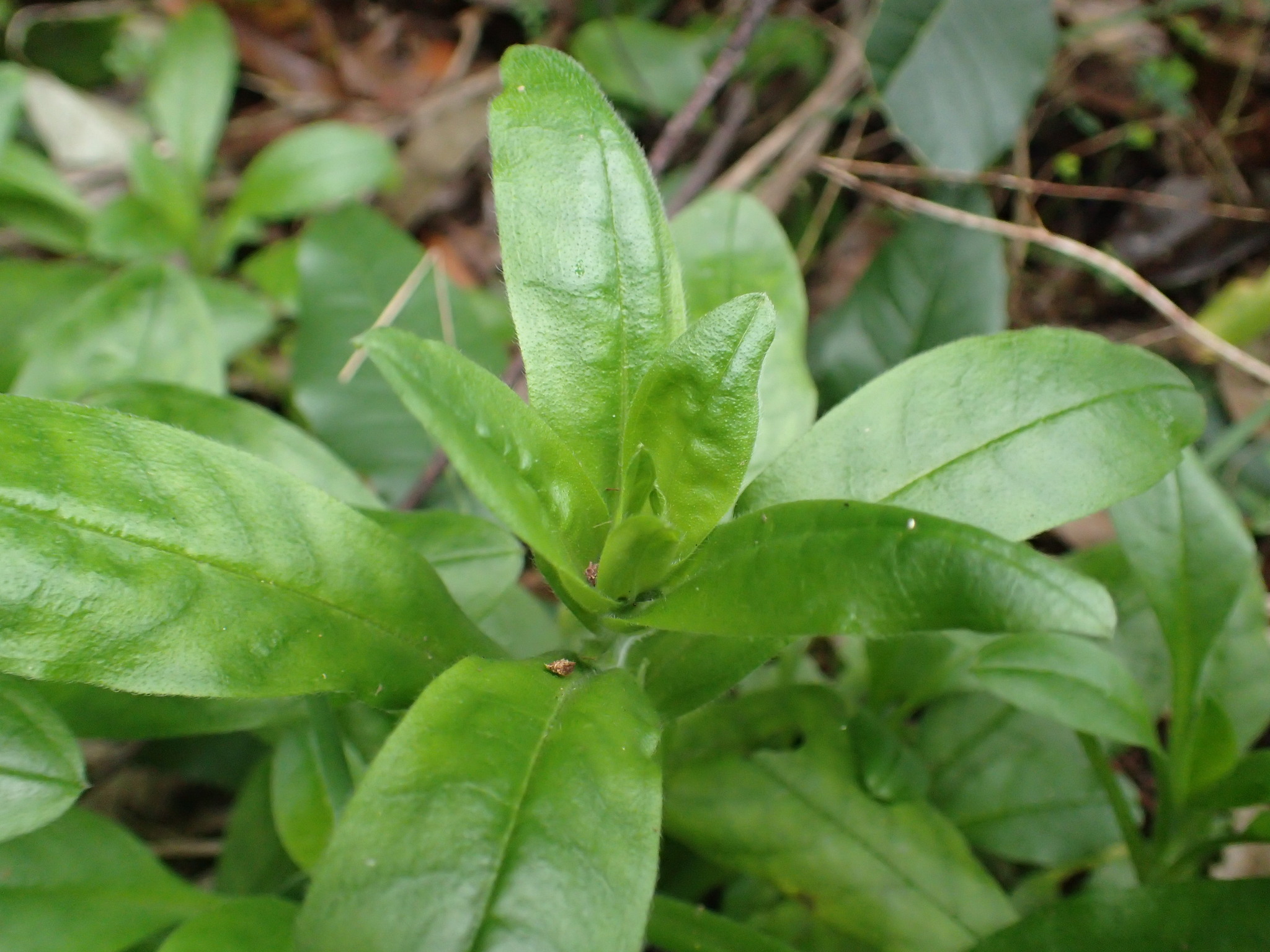
Trees and shrubs but mostly annual and perennial herbs with rhizomes or taproots, occasionally vines, generally with characteristic whiskery hair. Leaves alternate, occasionally lower ones opposite, simple; stipules absent. Flower clusters in cymes that coil in a characteristic form (scorpioid or helicoid), rarely solitary and axillary. Flowers bisexual, regular (rarely slightly irregular). Sepals mostly 5, free or united at the base. Petals united, mostly 5, often with scales in the throat, mostly blue, occasionally white, pink or yellow. Stamens mostly 5, alternating with the petals and attached to the tube, sometimes with a nectary disk. Ovary superior. Carpels 2, united, each with 2 chambers; ovules 1 in each loculus or numerous; style gynobasic; stigma(s) 1 and 2-lobed, 2 or 4, capitate to truncate. Fruit a schizocarp or a loculicidal or irregularly dehiscent capsule.
Cordiaceae and Heliotropiaceae are now considered to be separate families. This treatment follows Stevens, P.F. (2018, Angiosperm Phylogeny Website).
Some species may become weedy. Rarely cultivated plants include: Alkanna tinctoria (L.) Tausch, Alkanet, source of a red dye, occasionally grown in herb gardens as a novelty; Brunnera macrophylla I.M. Johnst., Siberian Bugloss, which has bright blue flowers in summer; Cynoglossum, Hound's Tongue, occasionally grown as C. amabile Stapf & J.R. Drumm., Chinese Forget-me-not, which is a biennial with prickly, burr-like fruits, sometimes available as the pink-flowered f. roseum; Halgania cyanea Lindl., Rough Halgania, a widespread native plant with deep blue flowers about 1 cm long and narrow leaves that are toothed at the tip; Lithodora diffusa (Lag. ) I.M. Johnst. from SW Europe and N Africa, a dwarf, more or less prostrate shrub available as a range of cultivars including 'Alba', 'Grace Ward', 'Heavenly Blue', 'Irish Crystal' and 'The Star' [Lithospermum diffusum Lag., Lithospermum prostratum Loisel.]; Myosotidium hortensia (Decne.) Baill., which has characteristically fleshy, shiny and kidney-shaped leaves, the flowers deep to pale blue in crowded clusters; Omphalodes, Navelwort, listed as the stoloniferous European O. verna Moench., Creeping Forget-me- not, and non-stoloniferous O. cappadocica DC. from W Asia; Pentaglottis sempervirens Tausch from Europe, very similar to Anchusa except for the netted veins and stalked nutlets; and Trachystemon orientalis (L.) G. Don from E Europe and W Asia, occasionally grown for its large, dull, bold, wrinkled, kidney-shaped leaves.
A red dye is produced from Alkanna tinctoria and several other genera are used in traditional herbal medicines (Borago, Lithospermum and Symphytum).
Hairs bristly; flower clusters coiled; flowers often with scales and mostly blue (occasionally white, pink or yellow).
94 genera and 1793 species, cosmopolitan but mostly temperate to subtropical, with a centre of diversity in the Mediterranean and W North America.
Source: (2002). Boraginaceae. In: . Horticultural Flora of South-eastern Australia. Volume 4. Flowering plants. Dicotyledons. Part 3. The identification of garden and cultivated plants. University of New South Wales Press.
Updated by: Val Stajsic, April 2018
